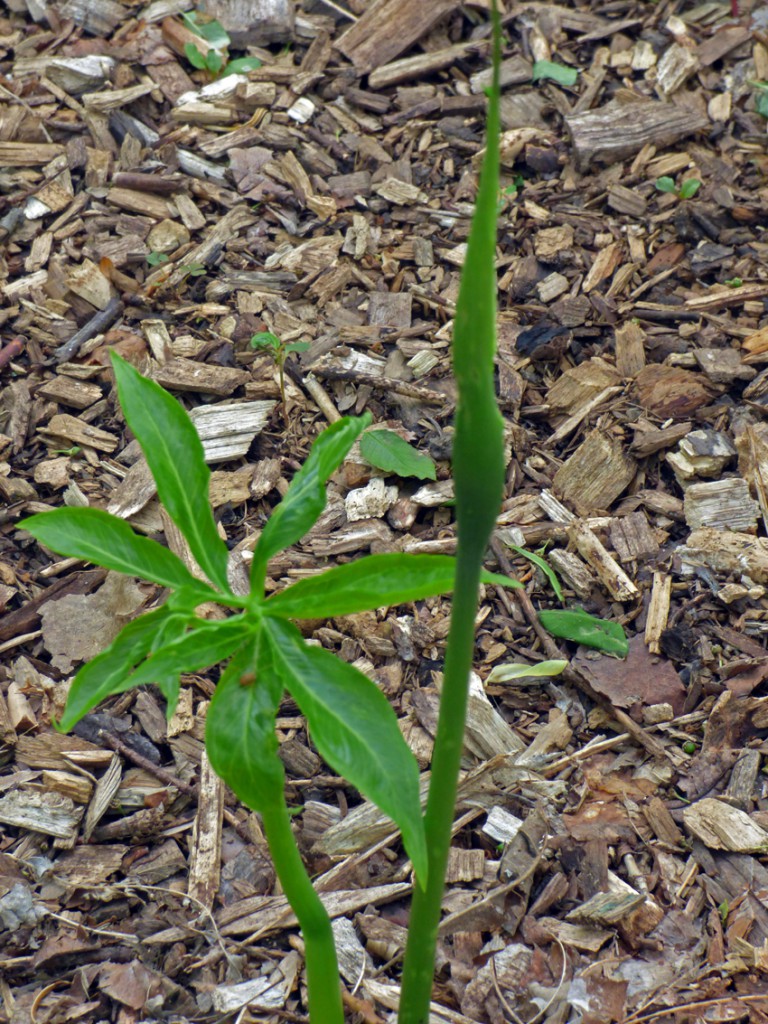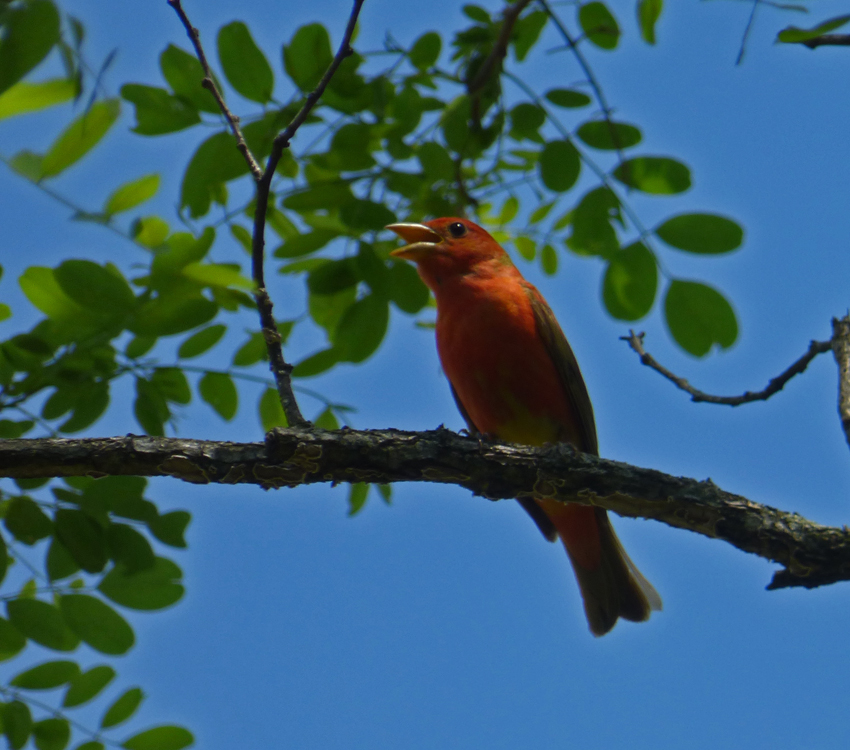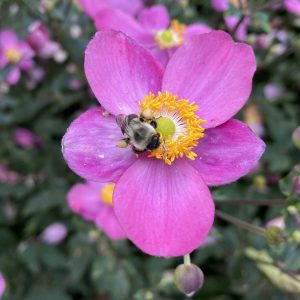
We are used to seeing flowers and birds at the Nature Preserve, right? Would you be surprised to learn we have green dragons and red faced dinosaurs in the Woodland Garden! Remember, not all dinosaurs were giants. Herpetologists would call this bright faced fellow a broad-head skink, but when you look closely, you can see his dinosaur ancestry. Although they may be found both on the ground and in trees, broad-head skinks, particularly large males, are more arboreal (tree-dwelling) than any of the other southeastern skinks. Adults are often seen high up in trees, sunning on exposed branches, while young are common on fallen trees and under bark or other debris. When pursued, broad-head skinks generally run for the nearest tree or log and can be quite difficult to capture. Like many other lizards, broad-head skinks will break off their tails when restrained, distracting the predator and allowing the lizard to escape. Broad-head skinks prey on a wide variety of insects, spiders, and other invertebrates. Large adults have powerful jaws, allowing them to overpower virtually any invertebrate and probably the occasional other lizard or small mammal.
Although they may be found both on the ground and in trees, broad-head skinks, particularly large males, are more arboreal (tree-dwelling) than any of the other southeastern skinks. Adults are often seen high up in trees, sunning on exposed branches, while young are common on fallen trees and under bark or other debris. When pursued, broad-head skinks generally run for the nearest tree or log and can be quite difficult to capture. Like many other lizards, broad-head skinks will break off their tails when restrained, distracting the predator and allowing the lizard to escape. Broad-head skinks prey on a wide variety of insects, spiders, and other invertebrates. Large adults have powerful jaws, allowing them to overpower virtually any invertebrate and probably the occasional other lizard or small mammal. As a snake grows, it must shed its skin. Now how could a person take off his t-shirt without hands? Perhaps he could follow the example of this snake who braced himself in a tree and wriggled and wiggled until he crawled right out of his skin, leaving it behind.
As a snake grows, it must shed its skin. Now how could a person take off his t-shirt without hands? Perhaps he could follow the example of this snake who braced himself in a tree and wriggled and wiggled until he crawled right out of his skin, leaving it behind.
Green dragons are actually a plant, now found growing in the Woodland Garden. They do NOT breath fire! Green dragons usually have one compound leaf, but it looks as though there are more, with 7-15 leaflets arranged in a semicircle. When viewed from the side, it is possible to imagine a silhouette of dragon wings, with the central leaflet (often a bit lower) as the head. But the name may come from the long “serpentine” spadix or that the large corms could look like dragon’s feet. Then from above, came a strange sound– “picky-tuck, picky-tucky tuck.” The only completely red bird in North America, the strawberry-colored male Summer Tanager is an eye-catching sight against the green leaves of the forest canopy. The Summer Tanager is a bee and wasp specialist. It catches these insects in flight and kills them by beating them against a branch. Before eating a bee, the tanager rubs it on the branch to remove the stinger. Summer Tanagers eat larvae, too: first they get rid of the adults, and then they tear open the nest to get the grubs.
Then from above, came a strange sound– “picky-tuck, picky-tucky tuck.” The only completely red bird in North America, the strawberry-colored male Summer Tanager is an eye-catching sight against the green leaves of the forest canopy. The Summer Tanager is a bee and wasp specialist. It catches these insects in flight and kills them by beating them against a branch. Before eating a bee, the tanager rubs it on the branch to remove the stinger. Summer Tanagers eat larvae, too: first they get rid of the adults, and then they tear open the nest to get the grubs.



